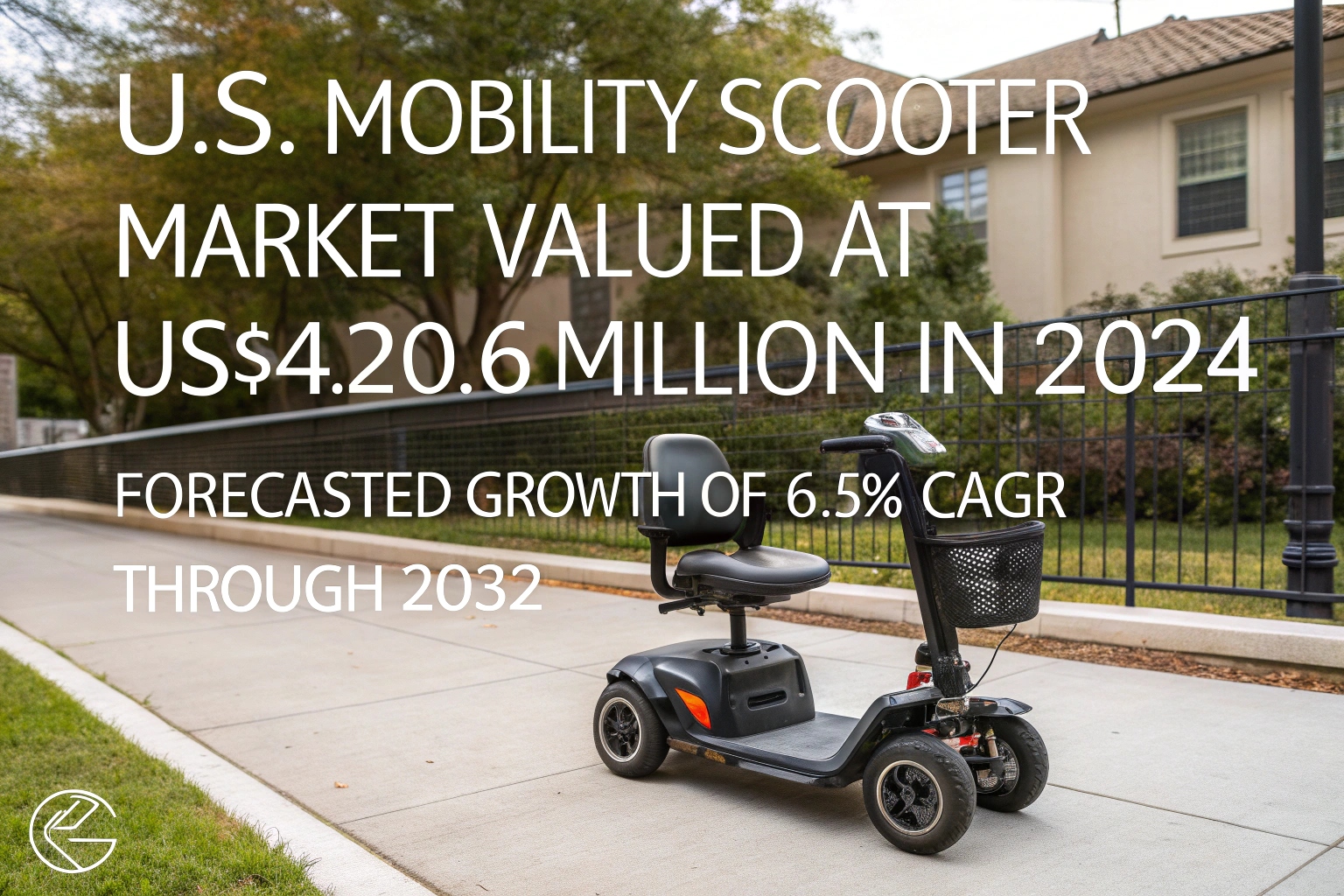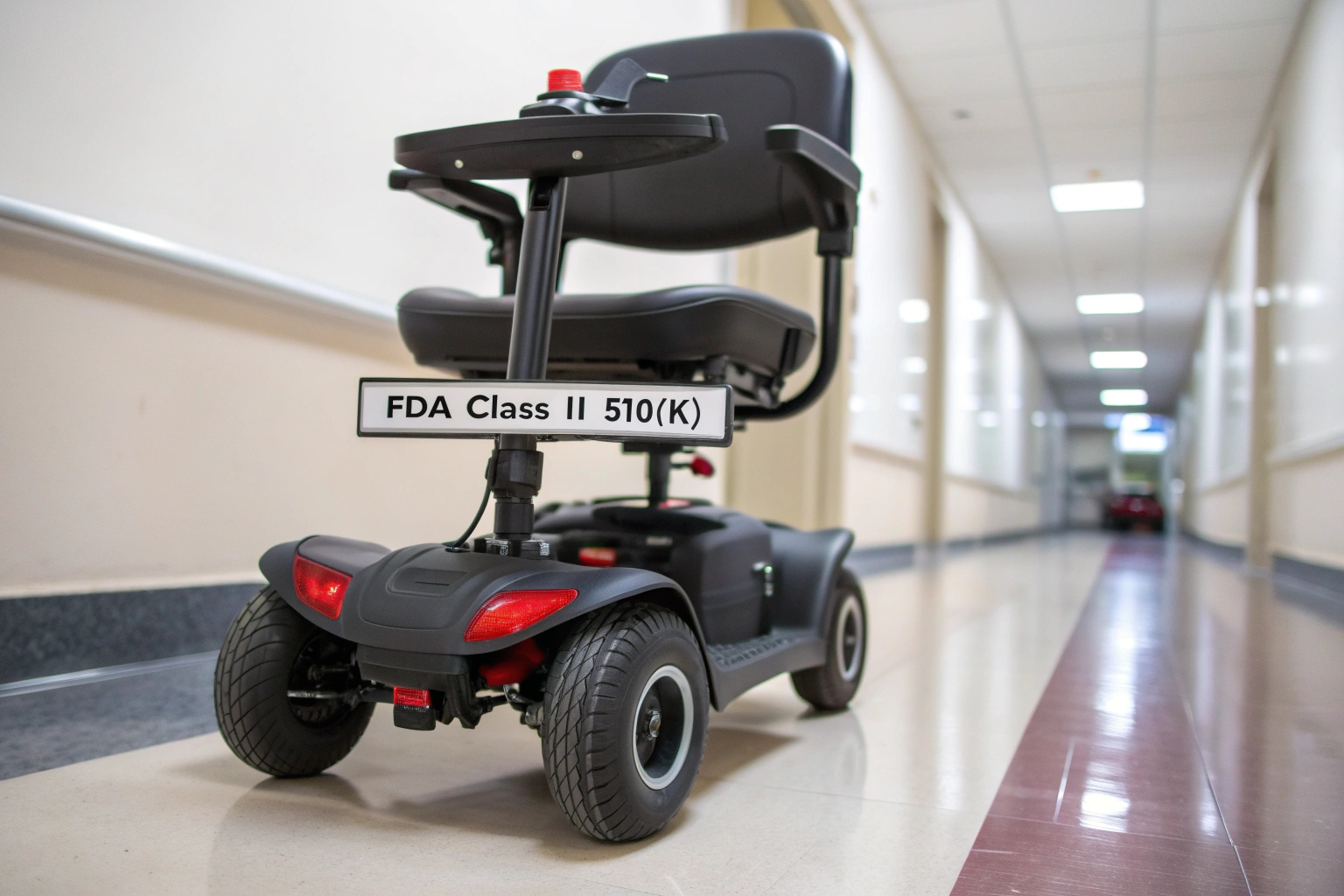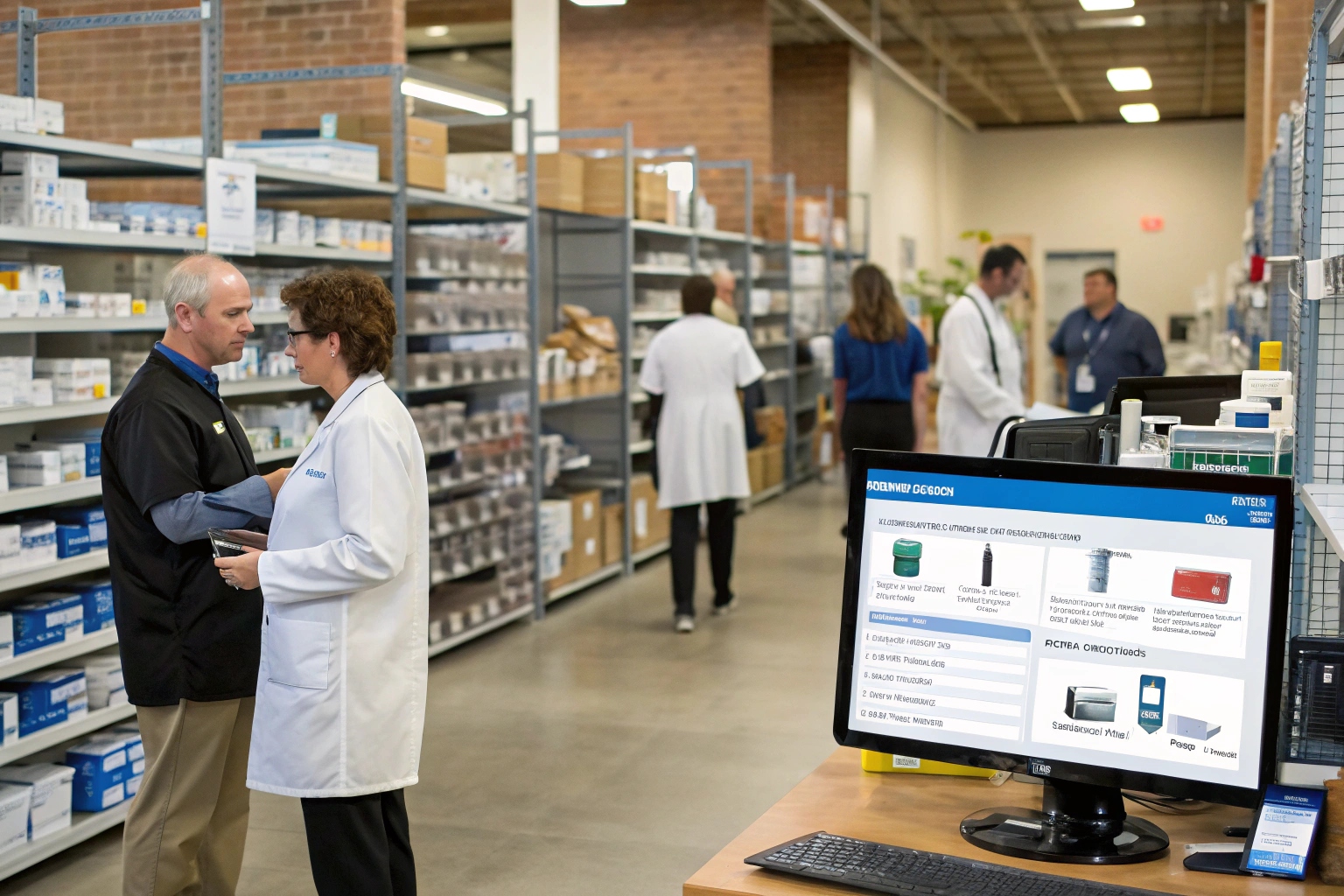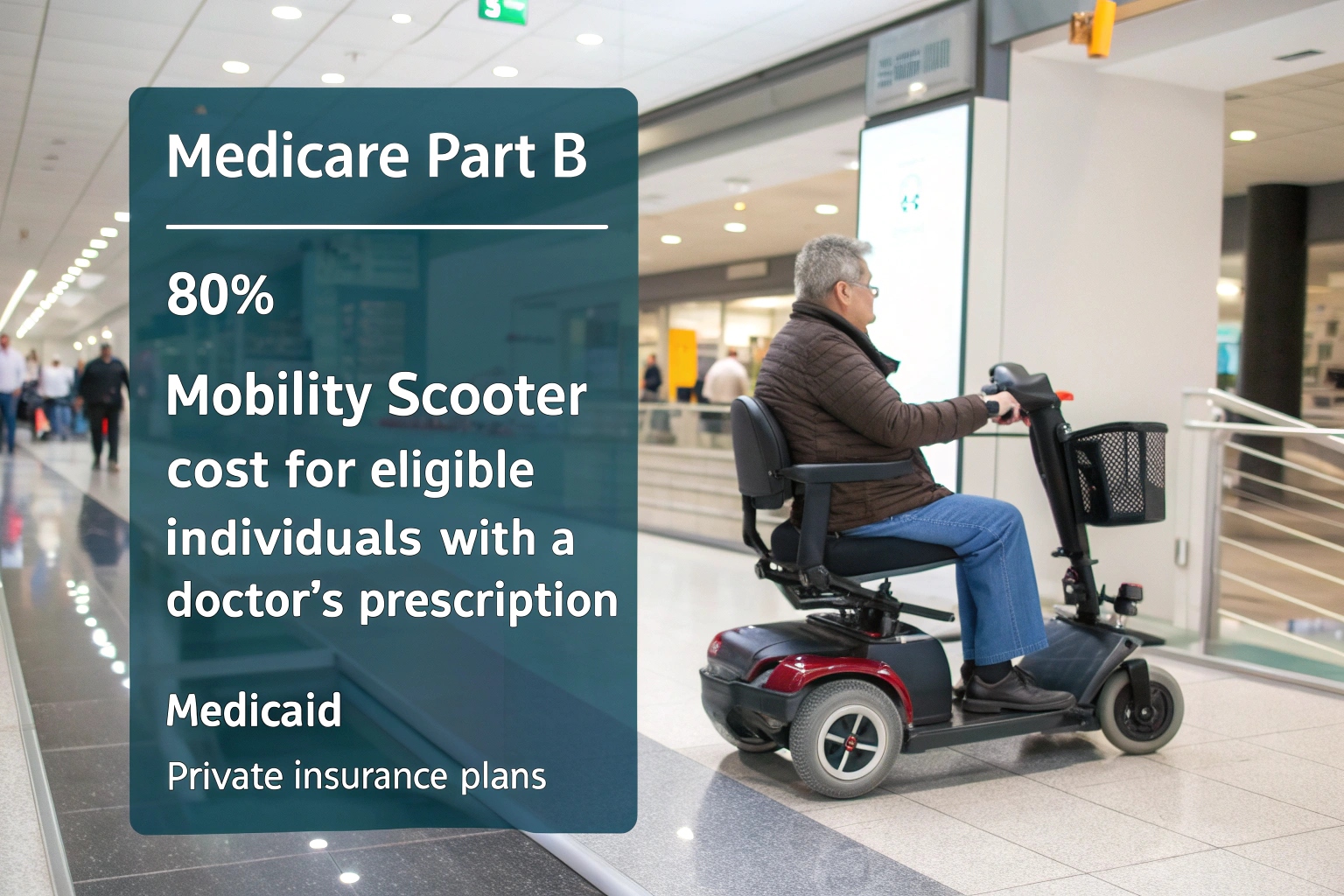The U.S. mobility market looks profitable. But complex regulations and channels can sink your import business. You need a clear map to navigate this lucrative landscape.
Success selling mobility scooter in the U.S. requires mastering four areas: its 6.5% market growth, strict FDA and customs rules for medical devices, dealer-dominated distribution channels, and the complex Medicare reimbursement system. Understanding these is key for any importer.

As a factory, we've helped many clients enter the U.S. It’s a market with huge potential, but you must do your homework. We see importers either succeed or fail based on how well they understand the landscape before their first container even lands. These four areas are the most critical. Let’s break down what you absolutely need to know to build a successful business.
What Is the Current Size and Growth of the U.S. Mobility Scooter Market?
You feel the U.S. market's potential but lack hard data for your business plan. Without it, you are investing blind and might misjudge demand completely.
The U.S. mobility scooter market was valued at US$420.6 million in 2024. It is forecast to grow at a steady 6.5% compound annual growth rate (CAGR) through 2032, making it a stable and attractive market.

From our factory perspective, these numbers tell an important story. This isn't a risky, volatile market; it's a mature industry with predictable growth. This makes it ideal for serious B2B importers looking to build a long-term business. The engine behind this growth is the aging "Baby Boomer" generation, which creates a constantly expanding customer base. This is why we see strong, consistent demand from our distributors in "Sun Belt" states like Florida, Arizona, and Texas, where many retirees live. When planning your inventory, it's also important to understand the product segments.
| Year | Market Size (US$ million) | CAGR |
|---|---|---|
| 2024 | 420.6 | — |
| 2025–2032 (forecast) | — | 6.5% |
We often see new importers focusing only on small, foldable travel scooters. While popular, there is huge demand for larger 4-wheel models. U.S. customers often prefer the perceived stability of 4-wheel scooters for outdoor use in suburban environments. Don't neglect this category.
What Regulatory and Compliance Requirements Must Imported Mobility Scooters Meet?
You found the perfect scooter to import. But one mistake in paperwork can get your entire container seized by U.S. Customs, destroying your profit and your reputation.
Your mobility scooters must have FDA Class II 510(k) clearance to be sold as medical devices. At the port, they must clear customs using HTS code 8713.90.0060 (duty-free) and you must file a DOT HS-7 form.

This is the most critical stage. We handle the manufacturing, but you, as the importer, are legally responsible for meeting U.S. regulations. I always tell my clients to partner with a licensed customs broker who understands these specific requirements. It is a small investment that prevents catastrophic losses. You must decide if you are importing a "medical device" or a "recreational vehicle," because the rules are completely different. For medical-grade scooters, the paperwork is non-negotiable.
| Requirement | Detail | What It Means for You |
|---|---|---|
| FDA Clearance | Class II Medical Device, 510(k) Pre-market Notification | Your scooter must be proven "substantially equivalent" to a legally marketed device. This is a complex process that must be completed before you import. |
| Harmonized Tariff (HTS) | 8713.90.0060 | This is the code you use on your customs declaration. The good news is that medical mobility scooters are currently duty-free. |
| DOT HS-7 Form | Declaration for Imported Motor Vehicles | Since scooters have wheels and a motor, you must file this form. For medical scooters under 20 mph, you will check Box 8, declaring it's not a standard motor vehicle. |
| FMVSS Compliance | Federal Motor Vehicle Safety Standards | This only applies if your scooter can go 20 mph or more. At that speed, it is considered a motor vehicle and needs things like certified lights and brakes, which most mobility scooters do not have. |
What Are the Primary Distribution Channels for Mobility Scooters in the U.S. Market?
Your container of scooters is ready to land. But who will actually sell them? Choosing the wrong sales channel means your inventory will just sit in a warehouse.
Over 80% of U.S. mobility scooter sales happen through brick-and-mortar clinical dealers and durable medical equipment (DME) distributors. The other 20% comes from online channels, but this segment is growing fast and offers a different kind of opportunity.

From our factory, we ship to two main types of U.S. partners, and they follow these channels. Understanding the strengths of each will help you build your business strategy. You don't have to choose only one, but you must know how they work.
| Channel | Market Share (%) | Notable Trends |
|---|---|---|
| Clinical Dealers / DME | ~80% | Focus on service, insurance billing, and personal fittings. |
| E-commerce / Online | ~20% | Driven by price competition and direct-to-consumer delivery. |
The clinical dealer channel is dominant for a reason: they handle insurance. These businesses are experts at navigating the Medicare reimbursement system. They provide value-added services like assessments, assembly, and repairs, which builds trust with older customers. Building relationships with these regional distributors is a key B2B strategy. The e-commerce channel is for customers who are paying out-of-pocket and are comfortable buying online. To compete here, you need excellent logistics for home delivery, great online marketing, and a strong customer support system to handle questions remotely.
What Financing and Reimbursement Options Are Available for U.S. Buyers of Mobility Scooters?
A customer needs your scooter, but the price is a major barrier. If you don't understand how they actually pay, you are missing the biggest sales driver in the market.
Medicare Part B is the primary payment source, covering 80% of a mobility scooter's cost for eligible individuals with a doctor's prescription. Medicaid and private insurance plans also provide coverage, making these expensive devices affordable for users.

This is the engine of the U.S. market. Our most successful American partners are the ones who become experts in this system. A scooter is not seen as a luxury item; it is a piece of Durable Medical Equipment (DME). To sell into this system, you or your dealers must be enrolled with Medicare as a supplier. The process for a user usually involves getting a face-to-face examination with their doctor, who then writes a prescription and fills out a Certificate of Medical Necessity (CMN). This paperwork proves the scooter is required for activities within the home.
| Payer | Coverage | User's Out-of-Pocket Cost |
|---|---|---|
| Medicare Part B | 80% of the approved amount (after deductible is met). | The remaining 20% co-payment. |
| Medicaid | Coverage varies widely by state. | Often little to no cost for low-income individuals. |
| Private Insurance | Follows Medicare, but plan-specific. | Varies based on the individual's insurance plan. |
While focusing on insurance is key, don't ignore cash-pay customers. Offering alternative financing through third-party lenders can also help close sales for those who don't qualify for reimbursement or want a model not covered by their insurance.
Conclusion
To succeed in the U.S., master market data, FDA/customs rules, dealer distribution channels, and the Medicare reimbursement system. These are the keys to building a profitable import business.

